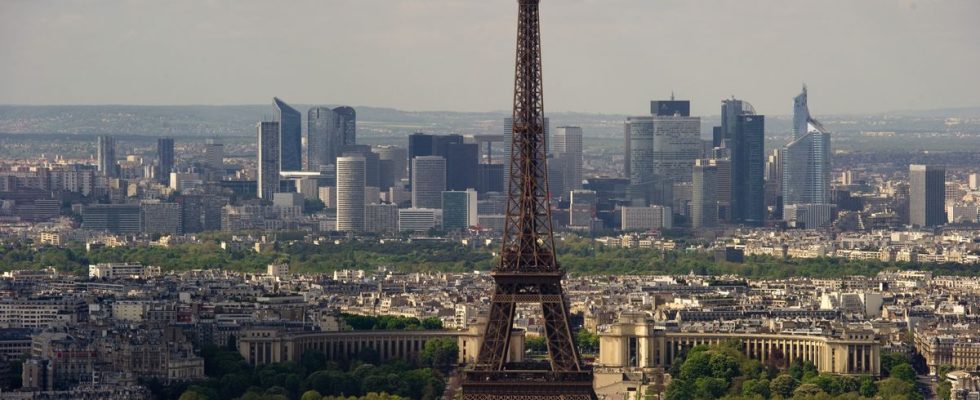It is, in Anne Hidalgo’s own words, a “decisive step”. Paris City Hall adopted its new local urban plan on Monday evening, which will shape the face of the capital of tomorrow. The text still has to go through a public inquiry before adoption at the end of 2024, but the bulk of the architecture is there: more green spaces (300 hectares promised, fifty really registered), fewer constructions and more transformation of buildings , 180 plots for public facilities, rules that encourage more social housing… In short, enough to hold together “two ambitions: social and climatic”, as Anne Hidalgo recalled in her opening speech. .
But if the imperative of social housing is not surprising, given the past commitments of the town hall, the kibosh on construction is more surprising, for those who have not followed recent debates. Because from this point of view, the executive has made a real change. Anne Hidalgo indicated in 2013 that she wanted to continue to densify the city. “For me, the ecological city is the dense city, urban sprawl is not ecological” she said. Today his first deputy makes another observation, admitting “that we are coming to the end of the Paris development strategy” and the mayor estimated in February “that Paris is becoming more dense, that’s good news”.
“You have concreted Paris”
The PLU voted on Monday drastically slows down construction, and puts an end to the logic of building at height. It even acts as a form of dedensification, because according to the models, the city should lose 500,000 m2 of offices in fifteen years. Noting this paradigm shift, the opposition did not fail to address tackles.
“Through today’s announcements the municipal majority proves that its policy for ten years was not the right one”, attacked Pierre-Yves Bournazel, co-president of the Independents and Progressives group, denouncing a “lack of vision and strategy of the municipal majority in terms of town planning”. “Since 2014, each parcel of available land has been built, often in an excessively dense manner and in a high-rise urban planning favoring minerality”, continues the councilor of Paris in the 18th arrondissement, citing as an example the Place de la République, where the temperature can approach 60 degrees on the ground in summeror even the Duo towers, described as “monuments against time”.
The criticisms didn’t stop there. The president of the Elected MoDems, Democrats and Ecologists of Paris recalled that between 2006 and 2020, 2.85 million m2 were built. “You have concreted Paris”, “you have created heat islands like the Place de la République” she attacked, when the leader of the LR group, Rachida Dati, was even harder : “Paris has gone from densification to densification, you have modified the heights, you have consented to numerous building elevations, contributing to the disappearance of hollow teeth, with more than 1,500 elevations. We can cite them with a shovel or a cement mixer. What did the greens do in this mess? Because you promise to undo everything you have done.
“Jean-Louis, it’s us”
If the right, which voted for example in favor of the Triangle Tower, is undoubtedly not in the best position to address these criticisms, the fact remains that a part of truth remains in this observation: he Parisian executive is indeed beginning a change of strategy, to such an extent that it is described as a “break” by environmentalists. “With this PLU we have reduced constructability by 30%, it is the first time in the history of the city that we have adopted a dedensification rule”, indicated at a press conference last week, Emile Meunier, who related to 20 minutes having the feeling of having with his group “been able to change minds”.
On the side of the town hall, we are less quick to send the baby out with the bathwater. Denial exercises are always perilous… When asked if he has turned the page on the Missika era, named after the former town planning assistant who launched most of the high-rise projects in Paris, his heir replies: “I’m not turning the page at all, Missika is my friend, he was my boss, Jean-Louis, it’s us. It was already Anne Hidalgo the mayor, and before Hidalgo was first deputy in charge of town planning, ”answers Emmanuel Grégoire.
A real conversion of minds?
But the rest of his answer makes nuances heard: “There is a form of magical thinking in believing that we can make a bioclimatic PLU that comes out of nowhere, it is the story of a maturity in terms of strategy urban”, says Emmanuel Grégoire, for whom “the urban strategy of recent years has worked because we have accompanied population growth”. In summary: we were right to do it then, and we are right to change the formula today. A form of pragmatism, to go beyond principles, and adapt to the times and to urban developments.
Related question: is the change in the executive today really connected with ecological imperatives, and is the objective of dedensification fully assumed? The response of the First Deputy for Town Planning is less clear than that of his boss. When asked if Paris should be dedensified, he replied: “I don’t think there is a problem of density in Paris, I feel the effects of overcrowding, sometimes in the public domain, linked to tourist visits and centers of attraction, but what bothers me is that we have no weapon to better curb the effects of eviction on housing stock [les logements retirés du marché pour être proposés sur les plateformes de location de courte durée, ndlr]. »
Not sure that the answer pleases the president of France Nature Environnement Paris, who calls to stop “concentrating people” and considers that it is an “aberration to want to pile people up in the same places”.

